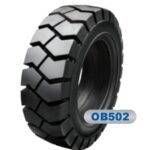1. Fundamental Specifications
- Size Parameters
- 11R22.5:
- Rim diameter: 22.5 inches (571.5mm)
- Section width: 11 inches (279mm)
- Overall diameter: ~41.7 inches (1059mm)
- Typical load capacity: 6,170 lbs at 120 psi
- 11R24.5:
- Rim diameter: 24.5 inches (622.3mm)
- Section width: 11 inches (279mm)
- Overall diameter: ~43.5 inches (1105mm)
- Typical load capacity: 6,940 lbs at 120 psi
- 11R22.5:
- Load Index & Speed Rating
- 11R22.5 commonly has 146/143 load index (dual/tandem)
- 11R24.5 often features 149/146 load index
- Both typically carry L (75 mph) or M (81 mph) speed ratings
2. Structural Design Variations
- Bead Configuration
- 11R22.5 uses standard 15° tapered bead seats
- 11R24.5 employs 5° radial run-flat bead design for enhanced stability
- Tread Patterns
- 11R22.5: Deeper grooves (18/32″ depth) for mixed terrain
- 11R24.5: Shallower treads (14/32″ depth) optimized for highway fuel efficiency
3. Performance Characteristics
- Rolling Resistance
- 11R24.5 shows 8-12% lower RR due to larger diameter
- 11R22.5 provides better traction in wet conditions
- Heat Dissipation
- 11R24.5’s larger air volume improves heat distribution
- 11R22.5 requires more frequent heat checks during long hauls
4. Compatibility Considerations
- Interchangeability Risks
- Legal Implications: DOT regulations prohibit mixing these sizes on the same axle
- Mechanical Issues:
- ABS/TPMS calibration errors (+7.2% speed variance)
- Differential wear from inconsistent rolling circumference
- Exceptional Cases
- Temporary spare use only when:
- Matching tire is unavailable within 200-mile radius
- Load reduced to 60% of capacity
- Speed limited to 50 mph
- Temporary spare use only when:
5. Purchasing Decision Factors
- Vehicle Compatibility TableApplication11R22.5 Recommendation11R24.5 RecommendationRegional Haul★★★★★★★☆☆☆Long-Highway★★☆☆☆★★★★★Construction★★★★☆★☆☆☆☆
- Cost Comparison
- 11R24.5 tires are 15-20% more expensive but offer longer tread life
- 11R22.5 provides better ROI for stop-and-go operations
6. Maintenance Best Practices
- Rotation Schedule
- 11R22.5: Rotate every 15,000 miles
- 11R24.5: Rotate every 20,000 miles
- Inflation Guidelines
- Cold pressure should be checked weekly
- Never cross-inflate between sizes
Conclusion
While both tires share the “11R” width classification, their dimensional and performance differences make them fundamentally incompatible for regular use. Fleet managers should select tires based on specific duty cycles rather than attempting substitutions.




